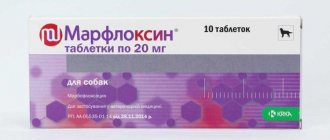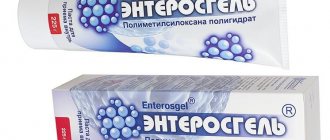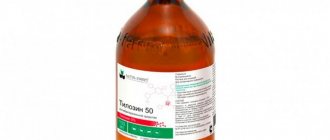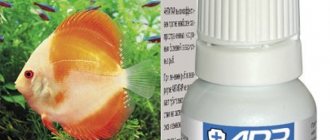How is Tylosin used to treat cats?
Tylosin is licensed for use in cats as a broad-spectrum antibiotic to treat infections, but it has other uses that have little to do with its antibiotic activity. In cats, tylosin not only has antibiotic properties, but also has a powerful anti-inflammatory effect against chronic intestinal inflammation. Its main use in cats is the treatment of chronic colitis. In this situation, it is used not as an antibiotic, but as an anti-inflammatory agent to relieve symptoms of damage to the large intestine. Although few formal studies have been done to study this non-antibacterial property of Tylosin, it certainly works in this regard, but there are many cats whose diarrhea does not go away unless Tylosin is given continuously.
Tylosin is safe for long-term use and is a good alternative to metronidazole, another anti-inflammatory drug and antibiotic for inflammatory bowel disease in cats that does not respond to long-term use. Tylosin has been used against intestinal infections in cats caused by Cryptosporidium, a single-celled parasite, and also caused by the toxin-producing bacterium Clostridium perfringens.
Tylosin can also be used in ferrets, rabbits, birds, reptiles and pocket pets.
Reviews from dog breeders
Dmitry, Korolev. My schnauzer has had stomach problems since childhood. We thought it was nothing serious, and suddenly the diagnosis was chronic gastritis. During exacerbations, the dog suffers terribly, it is scary to give painkillers, it can provoke internal bleeding. The doctor prescribed antibiotics, decided to find out more about them, and looked through a bunch of websites. It turned out that Tylosin is very effective for gastritis in dogs, and it was prescribed to us. We took 7 injections and the symptoms disappeared. It’s been six months now without attacks and no side effects. If anything happens, we'll inject it again, it seems harmless.
Svetlana, Yekaterinburg. I have come across antibiotics more than once, since I have 3 dogs. The usual reaction is diarrhea and a long recovery of intestinal microflora. The latest experience was the treatment of mycoplasmosis in dogs with Tylosin (2 animals were affected at once). Surprisingly, there was no negativity, there was no diarrhea, and there was no refusal to eat. In general, the dogs tolerated the injections very easily; they needed 3 of them per course. I studied the instructions for the medicine, it is possible that I will use it in other difficult cases. Still, finding a drug that animals will tolerate without consequences is not so easy; I don’t want to experiment on my pets.
Olga, Svetlogorsk. Our lapdog is already old and has been suffering from periodically worsening arthrosis for several years. We treat inflamed joints with Tylosin. A couple of injections are enough and the dog feels much better. I didn’t notice any side effects; it’s convenient that the drug has an analgesic effect.
Problems and Cautions
There are several tylosin products sold over the counter to control tear staining in white coated animals. Some veterinarians use varying amounts of tylosin. There is controversy regarding the use of antibiotics “off-label” for cosmetic problems. The first controversy is whether it is appropriate to use unknown quantities of drugs in animals for any reason (in the case of products that are not even standardized for the amount of tylosin they contain). The second problem concerns the consequences of antibiotic abuse.
Inadvertent use of antibiotics increases antibiotic resistance of bacteria in the environment, and in general, bacteria that become resistant to tylosin also become resistant to erythromycin and perhaps even other antibiotics. Since tear staining, also called epiphora, is simply a cosmetic problem, perhaps non-antibiotic treatment can be used instead. The loss of reliable antibiotic effectiveness has life-threatening consequences for both humans and animals, and we must be judicious in our use of them.
Indications for use
Registered indications for the use of Tylosin in cats are:
- bronchopneumonia;
- arthritis;
- bacterial dysentery;
- secondary bacterial infection in viral diseases.
In veterinary practice, the range of use of Tylosin is wider and includes eye infections, metroendometritis, purulent infections of the skin and soft tissues, otitis media and many other diseases caused by flora susceptible to Tylosin.
Learn about the main antimicrobials in animals
- Yodez
- Vibramycin
- Iodoform
- Iodinol
- Kanamycin
- Uses of iodine
- Iodopyrone in animals
- Potassium permanganate
- Sinulox in veterinary medicine
- Bactrim
- Ampicillin
- Benzylpenicillin
- Griseofulvin
- Diamond green
- Hexamethylenetetramine
- Tobramycin eye drops
- Natural penicillins
- Nystatin
- Oxacillin
- Neomycin
- Metronidazole
- Furadonin in animals
- Penicillins in veterinary medicine
- Methylene blue
- Tsiprovet tablets
- Levofloxacin for animals
- Tsiprovet drops for veterinary medicine
- Amikacin
- Lincomycin
- Imipenem
- Ketoconazole
- Itraconazole
- How to dilute cefazolin?
- Instructions for veterinary use of phthazine
- Tobramycin in veterinary medicine
- Cephalexin
- Amoxicillin in veterinary medicine
- Gentamicin for animals
- Use of cefazolin in veterinary medicine
- Enrofloxacin in veterinary medicine
^Top
I. General information
1. Name of the medicinal product for veterinary use:
— trade name of the drug – Tylosin 50 and Tylosin 200 (Tylosin);
- international nonproprietary name - tylosin.
2. Dosage form: solution for injection.
Tylosin 50 and Tylosin 200 in 1 ml contain as active substance: tylosin (in base form) 50 mg and 200 mg, respectively, and as excipients: 1,2-propanediol, benzyl alcohol and water for injection.
3. In appearance, the drug Tylosin 50 is a transparent liquid from light yellow to yellow, Tylosin 200 is a transparent liquid from yellow to brown-yellow. The shelf life, subject to storage conditions in the manufacturer's closed packaging, is 2 years from the date of production, after opening the bottle - 28 days.
Do not use Tylosin 50 and Tylosin 200 after the expiration date.
4. The drug is released packaged in 20, 50, 100 ml in glass bottles of appropriate capacity, hermetically sealed with rubber stoppers and reinforced with aluminum caps with tamper evident clips. Each consumer package is supplied with instructions for use.
5. Store Tylosin 50 and Tylosin 200 in the manufacturer’s sealed packaging, separately from food and feed, in a place protected from direct sunlight at a temperature of 10°C to 25°C.
6. Tylosin 50 and Tylosin 200 should be stored out of the reach of children.
7. Unused drug is disposed of in accordance with legal requirements.
8. Tylosin 50 and Tylosin 200 are available without a prescription from a veterinarian.
Price
When purchasing Tylosin 50 for cats, please note that the price depends on the volume of the package:
- 20 ml – 48-60 rub.;
- 50 ml – 115-130 rub.;
- 100 ml – 140-180 rub.
The cost of Tylosin 200 is slightly higher. For a bottle with a capacity of 20 ml you will have to pay about 85-90 rubles, and a package of 50 ml - 150-160 rubles. You can buy the medicine at any veterinary pharmacy or clinic. The antibiotic is also available in many online pharmacies for animals.
pharmachologic effect
Tylosin is active primarily against gram-positive, as well as some gram-negative microorganisms: streptococci, clostridia, chlamydia, Leptospira, corynebacteria, pasteurella, erysipelothrix, spirochetes Treponema chiodysentery and mycoplasmas. After intramuscular administration, the antibiotic is quickly absorbed into the bloodstream and reaches its maximum concentration in body tissues within 1 hour after injection. The therapeutic concentration of tylosin in tissues is maintained for at least 20 hours. It is excreted from the body mainly through the kidneys with urine, and in lactating individuals also with milk.
Precautionary measures
When working with any veterinary drug, you need to worry about personal safety so that the drug does not accidentally enter the circulatory system. Working with animals requires skill as you have to hold them while choosing the right injection site. Given their desire to escape and their strength, the risk of accidentally piercing their skin with a needle increases. Before the injury occurs, the needle may no longer be sterile, which can lead to serious infection.
When working with Tylosin 50, you should wear gloves; if the drug comes into contact with mucous membranes or skin, it should be washed immediately. During the injection, your hands should be free; smoking, drinking alcohol and eating food are prohibited during this time. After the procedure, hands should be washed with soap, disinfected and wiped dry.
Tylosin is a low-toxic drug. However, during its use, you should strictly observe the rules of personal hygiene and safety measures:
- avoid direct contact with the solution;
- use personal protective equipment;
- do not eat;
- In case of contact with skin or mucous membranes, rinse immediately with water and detergent;
- Dispose of empty packaging with household waste.
Side Effects of Tylosin on Dogs
Side effects may cause serious potential harm to the patient's health. It is important to know what side effects may occur to avoid making the condition worse.
The drug is contraindicated:
- for use by laying hens whose eggs are intended for consumption;
- in case of intolerance to the active substance;
- for simultaneous use with drugs of the penicillin, cephalosporin groups, as well as chloramphenicol, clindamycin, tiamulin, which reduce the effectiveness of Tylosin.
If you are intolerant to tylosin, side effects in the form of allergic reactions are possible. After stopping the use of the drug, the symptoms disappear. Additional therapeutic measures are not needed.
Special instructions:
- slaughter of chickens for meat after using the drug can be done after 5 days of the deadline for consumption with drinking water;
- When used with food there is no waiting period.
Among the contraindications for use
, intolerance to individual components of the drug, rash. In pigs, skin irritation may occur, swelling may occur, and in rare cases, the animal's rectum may prolapse. Respiratory adverse reactions and dermatological lesions disappear without a trace after discontinuation of the drug.
Signs of overdose have not been established. It is not recommended to administer Tylosin 50 together with other antibiotics, chloramphenicol, penicillin. Slaughter of cattle and pigs for meat is allowed within 8 days from the date of the last administration of the antibiotic. Forcibly killed animals before the expiration of the required period are unfit for human consumption; the meat can be used to feed other animals.
Animals tolerate Tylosin well. The drug should not be used if there is hypersensitivity to its individual components.
Side effects can manifest themselves in the form of an allergic reaction, itchy skin, runny nose, sneezing, increased lacrimation, and stool disturbances. These signs disappear on their own after discontinuation of the antibacterial agent and do not require symptomatic treatment.
If the dosage is violated, the pet may experience signs of poisoning, which are accompanied by nausea, increased allergic reactions, and limb cramps. If you notice the first signs, you should immediately seek qualified help at the nearest clinic.











